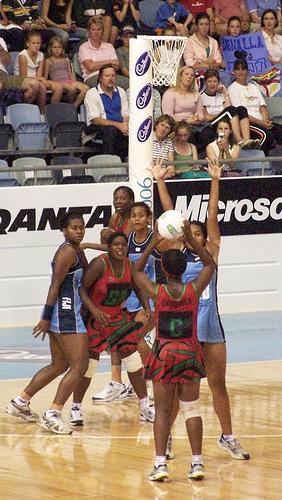In a sports landscape increasingly dominated by early specialization, athletes in the Upper Valley are bucking the trend by embracing multi-sport participation. As youth and high school competitors balance baseball, soccer, basketball, and more, experts and coaches alike are taking note of the benefits this diverse approach yields. This growing movement challenges the prevailing notion that focusing on a single sport from a young age is the key to success, offering fresh perspectives on athlete development and long-term performance across the region.
Upper Valley Athletes Embrace Multi-Sport Participation to Enhance Performance
In a region where early specialization often dominates youth sports culture, Upper Valley athletes are opting for diverse training strategies by engaging in multiple sports throughout the year. Coaches and sports experts in the area note that this approach not only reduces the risk of overuse injuries but also cultivates a broader range of athletic skills. Many local athletes alternate between activities such as soccer, basketball, and track, allowing them to develop agility, coordination, and endurance in unique and complementary ways.
Parents and trainers report a noticeable boost in overall performance and mental resilience among multi-sport participants. Emphasizing variety over repetition has become a key philosophy in the region’s athletic programs, encouraging young competitors to embrace versatility. The benefits have been observed in improved:
- Motor skill development
- Teamwork and strategic thinking
- Injury prevention
- Long-term motivation
| Sport | Key Benefit | Typical Season |
|---|---|---|
| Soccer | Endurance & agility | Fall |
| Basketball | Coordination & teamwork | Winter |
| Track & Field | Speed & strength | Spring |
Coaches and Experts Weigh In on Benefits of Diverse Athletic Training
Local coaches and sports experts are increasingly championing the advantages of varied athletic experiences over early single-sport specialization. They argue that engaging in multiple sports not only cultivates a broader skill set but also fosters mental resilience and prevents burnout. “Athletes who diversify tend to have better overall coordination and adaptability,” notes Erica Simmons, a veteran high school track and soccer coach. These varied skills often translate into improved performance when athletes eventually focus on their primary sport.
Experts also point to the long-term health benefits of diverse training regimens. By varying muscle groups and movement patterns, young athletes reduce the risk of overuse injuries, a common consequence of repetitive motion in singular sports. Below is a concise comparison illustrating the benefits of diverse versus specialized training:
| Aspect | Diverse Training | Specialized Training |
|---|---|---|
| Injury Risk | Lower due to balanced muscle use | Higher, especially overuse injuries |
| Skill Development | Wide-ranging and adaptable | Highly focused but narrow |
| Burnout Rates | Reduced through variety | Increased risk |
| Mental Resilience | Enhanced by diverse challenges | May be limited |
Community Programs Support Youth Development Beyond Single Sport Focus
Local community initiatives are increasingly prioritizing well-rounded development, encouraging youth to explore a variety of sports rather than specializing early in only one. These programs emphasize the social, physical, and mental benefits of multi-sport participation, helping young athletes build diverse skill sets and avoid burnout. Coaches and organizers highlight the importance of creating an environment where children can enjoy different activities, develop coordination, and improve overall athleticism without the pressure of immediate competition in a single sport.
Key features of these community-driven efforts include:
- Rotational schedules: Youth athletes participate in multiple sports across seasons, fostering adaptability.
- Skills clinics: Specialized workshops focusing on fundamental movement and individual skill development.
- Collaborative coaching: Cross-sport communication and training approaches to support holistic growth.
- Parental education: Programs that inform families about the risks of early specialization and benefits of diverse sports involvement.
Recommendations for Parents Encouraging Balanced Athletic Experiences
Parents play a pivotal role in fostering an environment where young athletes can thrive without the pressure of early specialization. Encouraging children to participate in multiple sports not only helps hone a diverse skill set but also reduces the risk of burnout and overuse injuries. Experts suggest focusing on the overall development of physical literacy, emphasizing fun, and setting realistic expectations rather than pushing for elite performance too soon. This balanced approach nurtures a lifelong love for physical activity and builds resilience both on and off the field.
To support a well-rounded athletic experience, parents can:
- Promote Variety: Encourage your child to try different sports through the seasons so they develop complementary skills and prevent repetitive strain.
- Listen Actively: Pay attention to your child’s interests and fatigue levels to avoid undue pressure or burnout.
- Collaborate with Coaches: Maintain open communication with coaches to align on development goals and safety measures.
- Emphasize Enjoyment: Celebrate personal progress and teamwork rather than just wins and statistics.
| Key Recommendations | Benefits |
|---|---|
| Diversify sports participation | Enhances skill development, prevents injuries |
| Monitor mental and physical wellbeing | Reduces burnout, promotes healthy growth |
| Foster open dialogue | Builds trust, supports athlete motivation |
| Prioritize fun and socialization | Encourages lifelong engagement in sports |
Closing Remarks
As Upper Valley athletes continue to embrace multi-sport participation, they challenge the prevailing trend of early specialization that dominates much of youth athletics nationwide. Their diverse athletic pursuits not only foster well-rounded physical development but also promote long-term engagement and enjoyment in sports. This localized shift underscores a growing recognition of the benefits inherent in varied athletic experiences-posing important considerations for coaches, parents, and policymakers aiming to nurture the next generation of athletes.




